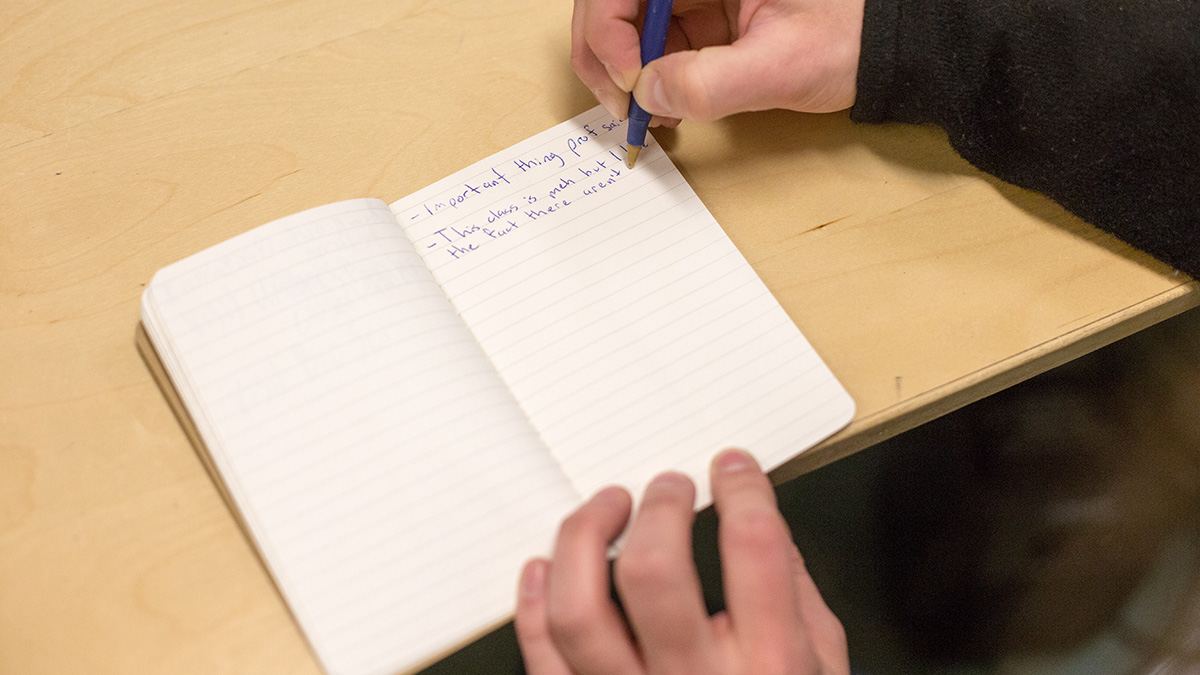 Supplied
SuppliedNew research by University of Alberta neuroscientists could help their students focus better in class.
Neuroscientist Kyle Mathewson and Master’s student Saveed Kizuk of the Faculty of Science have found that when there are no distractions (in a quiet class, for example), a student will perceive a continuous flow of information from their point of focus (the professor). But, if there are distractions (such as classmates talking), information is experienced in waves.
Mathewson’s 12-month study, funded by the Faculty of Science and the National Sciences and Engineering Research Council of Canada, attributed this difference in processing information to alpha waves, a type of electrical wave produced by the brain to block out stimulus.
“When people want to pay attention, the associated area of the brain decreases the size of its alpha waves,” Mathewson said. “This can be thought of like calming a lake — there are less waves blocking this part of the brain from processing all the information from its target … When the brain wants to ignore something, such as a billboard while driving, the part of the brain that represents your peripheral vision increases the size of the alpha waves it produces.”
But the brain isn’t perfect at ignoring distractions because troughs of the alpha waves allow information in, Mathewson added.
“When alpha waves are large, there are periods where we can detect things and periods where we cannot,” he said. “When we take in the world in our minds, we’re taking it in frames of a movie, or like clips of a video.”
The brain’s inability to completely block out distractions is likely due to people wanting to keep in touch with the outside environment, Mathewson added. When driving, for example, people may want to ignore things on the periphery, like billboards, but there may still be things the brain wants to see, such as pedestrians.
In Mathewson’s lab, a graduate student is attempting to control the brain’s production of alpha waves by electrically stimulating the brain with alternating currents. The lab is also developing portable technologies to measure the brain’s alpha waves in real-world situations. Mathewson hopes to work with campus sports teams to measure athletes’ brain waves in different parts of the game.
“The long-term goal is to monitor things in real-time where people, such as athletes and drivers, can get a cue that tells them when they’re not paying attention,” Mathewson said.
For now, the best solution for students to avoid distractions is to focus and not multitask, Mathewson said. He added that it isn’t always possible as people are often bombarded with distractions from phones, computers, and people around them.
“It is only going to get worse,” Mathewson said. “In the coming years, we might have a big problem with distraction and people not attending to the world they’re really in. The time is really right to study attention and inform the public the dangers of being distracted.”
Correction: A previous version of this article referred to Kyle Mathewson as a psychologist. Since Mathewson is a researcher of psychology and not a clinical psychologist, the article now refers to him as a neuroscientist.




